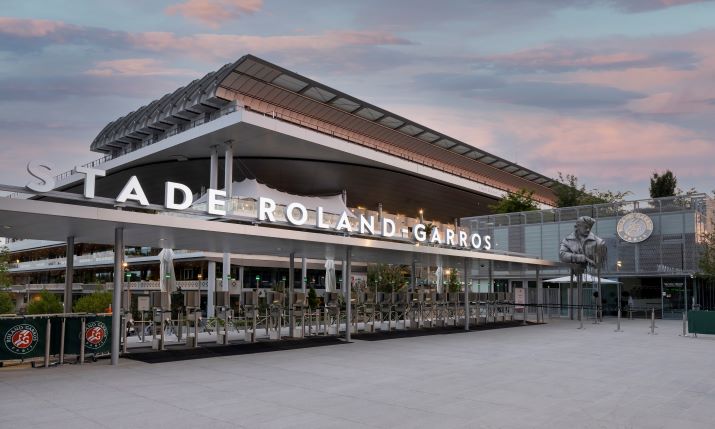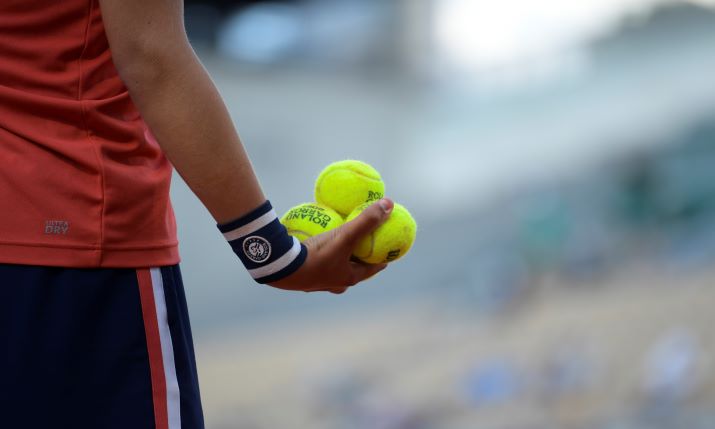HBS and Fédération Française de Tennis bring the score to deuce for Roland Garros 2021

2021 at Roland Garros marked the first time in 30 years that French incumbent, France Télévisions, had not held the reigns over the production, instead with Fédération Française de Tennis with host broadcaster, HBS, setting a new standard
Host Broadcast Services (HBS) has just completed its first Grand Slam at Roland Garros as the new host broadcaster alongside partner, Fédération Française de Tennis (FFT), managing the first event of the three year agreement with confidence.
This year the FFT put itself in control of the broadcast of the event, ramping up both the production quality and what it provides for rights holding broadcasters. For HBS, this has meant working hard to fulfil the dreams and desires of its new partner to push the French Open onwards and upwards.
The FFT aimed high for 2021, marking the first time in 30 years that French incumbent, France Télévisions, had not held the reigns over the production. To make the FFT’s ambitions come true, HBS bought in approximately 740 staff for the host broadcast operation. They worked tirelessly to produce over 800 tennis matches during the course of the three week tournament.
High production quality
On the production workflow, Philippe Oziol, HBS project director for Roland Garros tells SVG Europe: “The production of the main courts is natively in UHD (HDR and SDR) with native UHD main cameras and upconverted/upmapped sources for additional shots and GFX. The rest of the productions is 1080p. Delivery to broadcasters is proposed in UHD HDR, UHD SDR, 1080p SDR and 1080i.”
“For rights holders we have a media server providing access to all the content generated around the event, offering differing standards based on the rights holders’ needs – whether premium or standard subscriptions – and offering on or off-site access”
He goes on: “Production is UHD HDR native on the Philippe-Chatrier court, UHD SDR on Suzanne-Lenglen, Simonne-Mathieu and court 14, and 1080p50 for all others production. The action is covered by 116 wired cameras (42 UHD natives), 15 RF cameras and seven ENG crews. Distribution is centralised at the MCR/CIR for on-site delivery with Eurovision delivering the worldwide transmission.”

The FFT has created a new TV compound for 2021 based on temporary cabins, which will be fine-tuned year on year going forwards to the 2024 Olympics and Paralympics, when Roland Garros will host the tennis for both events.
Oziol explains the details of the new compound: “The set up at the compound is structured around cabin-based galleries working with flyaway kits. The global workflow for the event is designed around 20 galleries: six main court galleries (UHD HDR/UHD SDR/3G); and 10 ViBox galleries for the outside courts. In addition, four galleries are available for additional content delivery (international super signals, FFT studio and stadium giant screen playout).
“Everything is networked through the EVS system, which is based on a global workflow of 20 XT-VIA and 21 LSM-VIA remotes, sharing 168 sources between live replay operators, highlights and editing teams,” he adds.
The operation is almost completely based on site, with match production, GFX, editing, and ENG crews all working from the Roland Garros complex. Notes Oziol: “The only element we have off-site is the logging operation and media asset management, where we have 24 loggers based off-site at the HBS HQ in Boulogne-Billancourt, a few minutes’ walk from the stadium. The logging operators are all connected into the same network as those working on site via the server we have based at the HB House, accessible through the cloud off-site.”
Media server first
This year marks the first time Roland Garros has sported a media server for rights holders, which actually makes the French Open the first Grand Slam to provide this service for its broadcasters, greatly enriching the offering and therefore its coverage globally.
“For rights holders we have a media server providing access to all the content generated around the event, offering differing standards based on the rights holders’ needs – whether premium or standard subscriptions – and offering on or off-site access,” says Oziol.
The vision switchers used are mainly Grass Valley KFrame X, says Oziol. He adds: “The Philippe-Chatrier vision mixer is a Sony XVS8000. Cameras are Sony HDC-3500, HDC-5500 (SSM and Ultra Motion), and Panasonic UE-150.”
On whether HBS had decided to use IP or base band, Oziol says: “The initial plan was a fully IP-based solution, [but] due to the change in dates of the event there had to be some adaptation to the set up. The IP-based solution was conserved for the central core audio and video resource sharing and distribution, while the production aspect has been handled with legacy core equipment linked via SDI<>IP gateways Imagine Selenio network processor.”
Roland Garros took place from 24 May to 13 June 2021.
